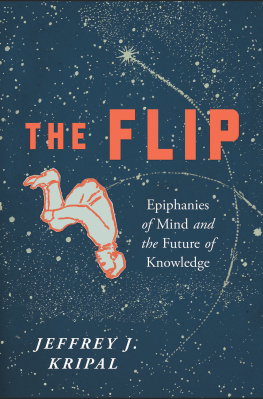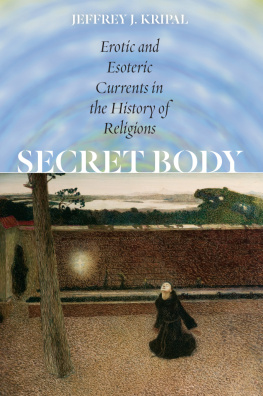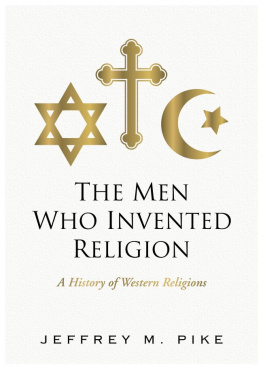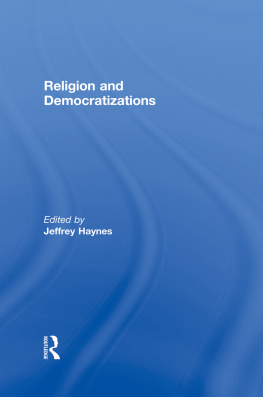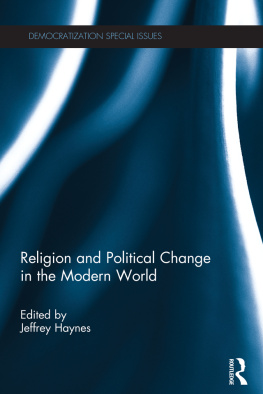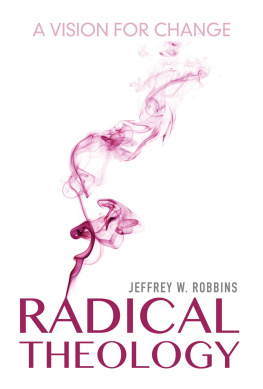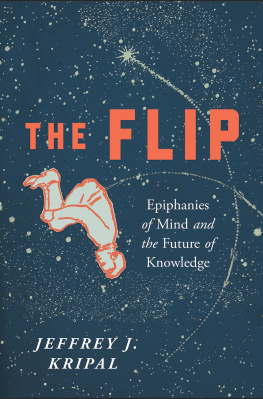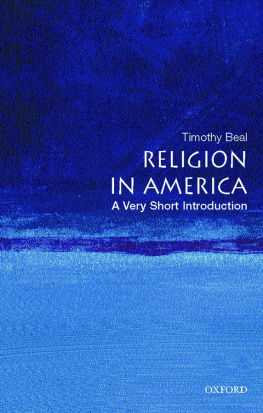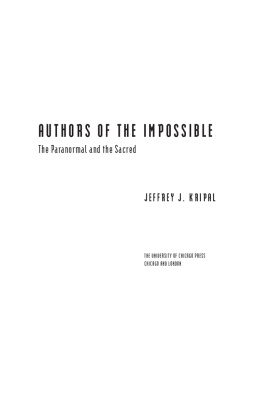Jeffrey J. Kripal - Esalen: America and the Religion of No Religion
Here you can read online Jeffrey J. Kripal - Esalen: America and the Religion of No Religion full text of the book (entire story) in english for free. Download pdf and epub, get meaning, cover and reviews about this ebook. year: 2007, publisher: The University of Chicago Press, genre: Religion. Description of the work, (preface) as well as reviews are available. Best literature library LitArk.com created for fans of good reading and offers a wide selection of genres:
Romance novel
Science fiction
Adventure
Detective
Science
History
Home and family
Prose
Art
Politics
Computer
Non-fiction
Religion
Business
Children
Humor
Choose a favorite category and find really read worthwhile books. Enjoy immersion in the world of imagination, feel the emotions of the characters or learn something new for yourself, make an fascinating discovery.

- Book:Esalen: America and the Religion of No Religion
- Author:
- Publisher:The University of Chicago Press
- Genre:
- Year:2007
- Rating:4 / 5
- Favourites:Add to favourites
- Your mark:
- 80
- 1
- 2
- 3
- 4
- 5
Esalen: America and the Religion of No Religion: summary, description and annotation
We offer to read an annotation, description, summary or preface (depends on what the author of the book "Esalen: America and the Religion of No Religion" wrote himself). If you haven't found the necessary information about the book — write in the comments, we will try to find it.
Esalen: America and the Religion of No Religion — read online for free the complete book (whole text) full work
Below is the text of the book, divided by pages. System saving the place of the last page read, allows you to conveniently read the book "Esalen: America and the Religion of No Religion" online for free, without having to search again every time where you left off. Put a bookmark, and you can go to the page where you finished reading at any time.
Font size:
Interval:
Bookmark:

Esalen
AMERICA AND THE RELIGION OF NO RELIGION
Jeffrey J. Kripal
The University of Chicago Press
Chicago and London
The University of Chicago Press, Chicago 60637
The University of Chicago Press, Ltd., London
2007 by Jeffrey J. Kripal
All rights reserved. Published 2007
Paperback edition 2008
Printed in the United States of America
17 16 15 14 13 12 11 10 09 08 2 3 4 5 6
ISBN-13: 978-0-226-45369-9 (cloth)
ISBN-13: 978-0-226-45370-5 (paper)
ISBN-13: 978-0-226-45371-2 (ebook)
ISBN-10: 0-226-45369-3 (cloth)
ISBN-10: 0-226-45370-7 (paper)
Library of Congress Cataloging-in-Publication Data
Kripal, Jeffrey John, 1962
Esalen : America and the religion of no religion / Jeffrey J. Kripal.
p. cm.
Includes bibliographical references and index.
ISBN-13: 978-0-226-45369-9 (cloth : alk. paper)
ISBN-10: 0-226-45369-3 (cloth : alk. paper)
1. United StatesReligion. 2. Religion and cultureUnited States. 3. Esalen Institute. I. Title.
BL2525.K75 2007
150.71'179476dc22
2006029913
: Hieronymus Bosch (c. 14501516), central panel of The Garden of Earthly Delights. Museo del Prado, Madrid, Spain. Photo: Scala / Art Resource, NY.
 The paper used in this publication meets the minimum requirements of the American National Standard for Information SciencesPermanence of Paper for Printed Library Materials, ANSI Z39.48-1992.
The paper used in this publication meets the minimum requirements of the American National Standard for Information SciencesPermanence of Paper for Printed Library Materials, ANSI Z39.48-1992.
for Mike
bhukti-mukti
sensual delight spiritual flight

and for Dick
na samsarasya nirvanat kimchid asti visheshanam
na nirvanasya samsarat kimchid asti visheshanam
There is not the slightest difference between the world and nirvana. There is not the slightest difference between nirvana and the world.
Now the revising of The Interpretation of Dreams for the Collected Edition was a spur to reconsider the problem of telepathy. Moreover my own experiences... won such a convincing force for me that the diplomatic considerations on the other side had to give way. I was once more faced with a case where on a reduced scale I had to repeat the great experiment of my life: namely, to proclaim a conviction without taking into account any echo from the outer world.
private letter of SIGMUND FREUD to ERNEST JONES
The siddhi [supernormal power] of the vijnana [gnostic faculty] and the siddhi of the body belong... to that range of experience and of divine fulfillment which are abnormal to the present state of humanity.... they are denied by [the reason of] the sceptic and discouraged by [the faith of] the saint.... [But there is no] great man with the divine powers at all manifest in him who does not use them continually in an imperfect form without knowing clearly what are these supreme faculties that he is employing. If nothing else, he uses the powers of intuition & inspiration, the power of ishita [synchronistic desire] which brings him the opportunities he needs and the means which make these opportunities fruitful and the power of vyapti [psychic permeation, likened to telepathy] by which his thoughts go darting & flashing through the world & creating unexpected waves of tendency both around him and at a distance. We need no more avoid the use of these things than a poet should avoid the use of his poetical genius which is also a siddhi unattainable by ordinary men or an artist renounce the use of his pencil.
SRI AUROBINDO in his private diaries, Record of Yoga
Contents
Illustrations
Acknowledgments, Sins, and Delight
I am indebted to the many individuals I have had the privilege of meeting and working with over the last eight years on this and related projects. In particular, there were all those brave enough to trust an already controversial interpreter with analyses of their own books and lives, and who graciously responded to my eroticized readings with uncensoring criticisms, helpful suggestions, and more, not less, humor and eros (much of it way sexier than anything I had writteneven pictures). Thank you all for putting up with me, and for egging me on. I apologize for not using the pictures.
I must first and foremost thank Michael Murphy, cofounder of Esalen, deep reader of my earlier books, and fellow X-Man. Steven Donovan, John Heider, and George Leonard also deserve special mention. Steve was a constant source of insight, humor, historical information, and invaluable archival material. I doubt I have ever seen such an organized being. John graciously offered me his unpublished Esalen journals, novels, and human potential essays, welcomed me into his Kansas home for a weekend visit, and bore my countless questions with patience and humor. George gave his expert eye to the manuscript, offered critical feedback, and taught me, through example, to take the hit as a gift.
I must also thank the community and leaders of the Esalen Institute itself, not only for their constant hospitality and generosity over the years, but also for their willingness to accept my proposal to hold an academic conference on the history of the place at the place. On the Edge of the Future: Locating Esalen in the Histories of American Religion, Psychology, and Culture was held from March 30 to April 5, 2003. This gathering featured approximately twenty historians of American religion and major Esalen figures, each of whom delivered papers and all of whom helped me think through my own initial book outline. Select papers from this gathering were subsequently published by Glenn Shuck and me as On the Edge of the Future: Esalen and the Evolution of American Culture (Indiana University Press, 2005).
Numerous other individuals also played significant roles in my research and thinking. Some receive major treatment here. Others work their magic behind the scenes. All of these include, in alphabetical, that is, random order: Walter Truett Anderson, Bill Barnard, John Barrie, Steve Beck, Bill Benda, Marcia Brennan, George Brown, Antonella Cappuccio, Fritjof Capra, Seymour Carter, Dorothy Charles, Chungliang Al Huang, Adam Crabtree, Eric Erickson, Anita Eubank, Jorge Ferrer, Robert Forte, Robert Fuller, James Garrison, Christina Grof, Stanislav Grof, Jessica Grogan, Joan Halifax Roshi, Wouter Hanegraaff, Steve Harper, Jane Hartford, Gil Hedley, Peter Heehs, James Hickman, Laura Huxley, Don Hanlon Johnson, Cynthia Johnson-Bianchetta, Sam Keen, Ed Kelly, Emily Williams Kelly, Rondi Lightmark, Bob Love, Nancy Lunney-Wheeler, Brian Lyke, Edward Maupin, Sukie Miller, Joseph Montville, Katriona Munthe-Lindgren, the late Dennis Murphy, Dulce Murphy, Claudio Naranjo, Andy Nussbaum, Jay Ogilvy, Frank Poletti, Chris Price, David Price, Pennell Rock, Marina Romero, Henry Stapp, Rick Strassman, Jeremy Tarcher, Russell Targ, Richard Tarnas, Charles Tart, Ann Taves, Keith Thompson, Bill Torbert, Andrew Weil, and Gordon Wheeler.
I also want to express my gratitude for a colleague, friend, and spiritual brother, Robert C. Gordon, whose vision of things American and mystical connects intriguingly, uncannily, with my own. Roberts essential claim in The Open Road is that much of modern American mysticism can best be thought of as a creative fusion of Tantric sensibilities from Asia and the humanist-individualist ethos of American democracy, especially as the latter is revealed by Emerson, Whitman, and Thoreau. His integral fusions render the resonances between our visions astonishingly close at times. I simply want to confess that resonance here.
Next pageFont size:
Interval:
Bookmark:
Similar books «Esalen: America and the Religion of No Religion»
Look at similar books to Esalen: America and the Religion of No Religion. We have selected literature similar in name and meaning in the hope of providing readers with more options to find new, interesting, not yet read works.
Discussion, reviews of the book Esalen: America and the Religion of No Religion and just readers' own opinions. Leave your comments, write what you think about the work, its meaning or the main characters. Specify what exactly you liked and what you didn't like, and why you think so.

